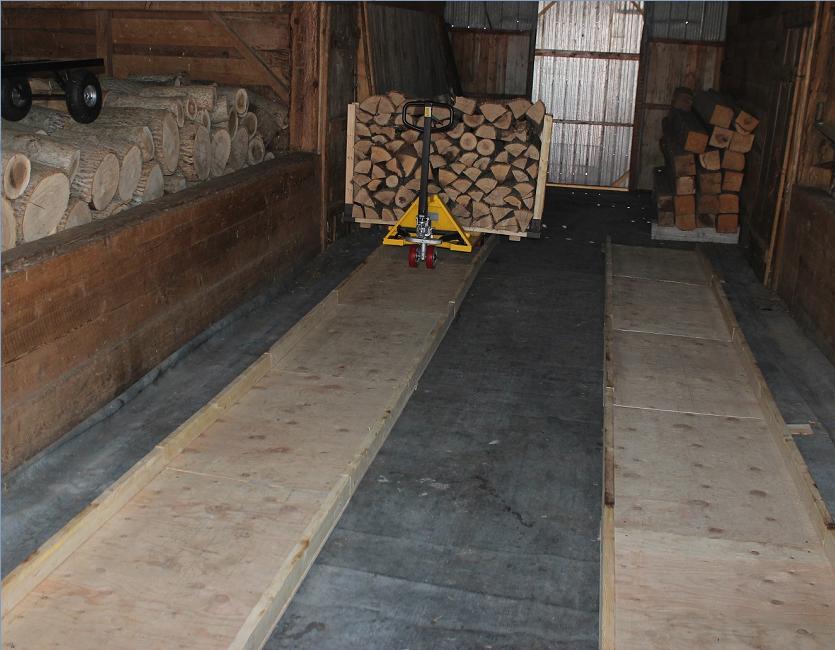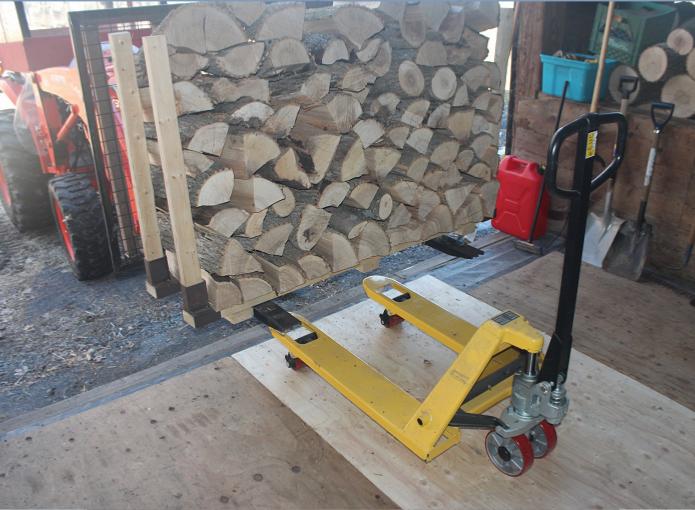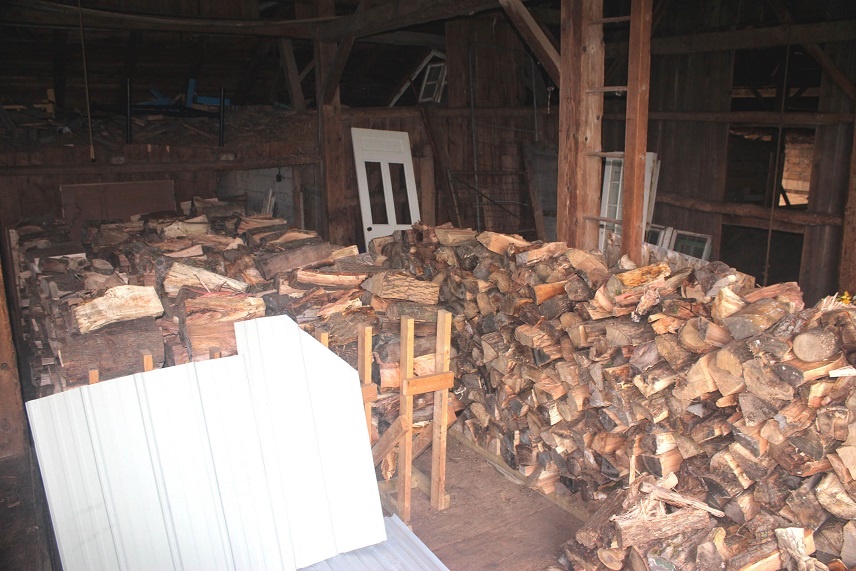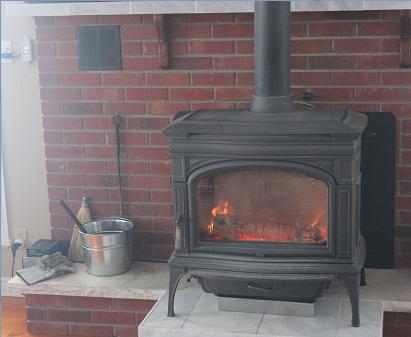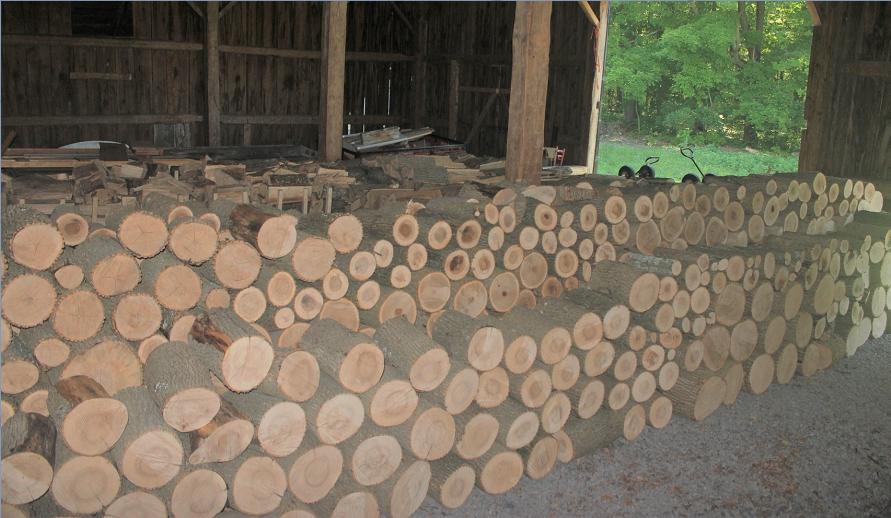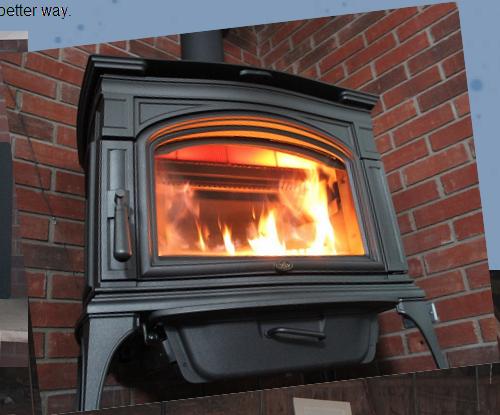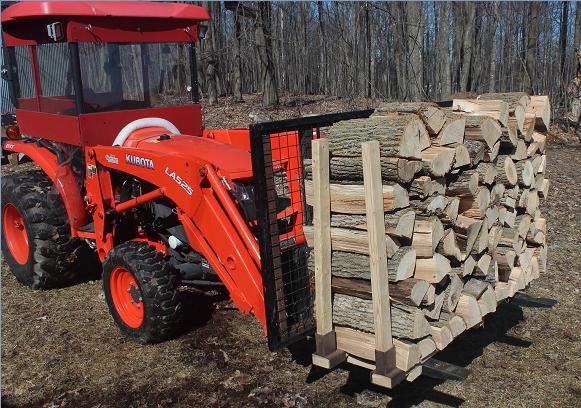Woodstoves - heating with wood
Updated: Apr 2022
Rural Ontario, surrounded by farm land, with 20 acres of which 10 is hardwood forest, it was a natural to heat the 1875 log house and its 1992 extension with wood stoves. Heating most of the house is the fabulous Lopi Cape Cod catalytic unit (left image), and in the basement a Lopi Rockport (right image). The first year we moved in, I had no time to process trees from the bush, and had 12 cords delivered which I corded in one of the barns. Lots of work, wet medium quality cords, and a pain to place in the tractor bucket or trailer pulled by ATV during the winter only to re-cord in the house. There had to be a better way.
Click here to better view this site
And there was... scouring the internet, few had attempted nor gone as far as the following; I bought 24 foot sections of steel square pipe, cut and welded them into 216 couplers which I then slipped 2x4 and 2x3 lumber to make 54 racks that could hold half a cord each, two years supply. Then I processed the excellent hard woods of my forest and filled up these racks, placing 27 per barn, which I would get out during the winter using a pallet jack, then picking them up with the tractor forks. The photos shows a years supply in each barn. I built 'floors' to support the racks and the lift jack to move freely - one is barely visible under the lift jack.

Here is the tractor having dropped the racks onto the two trolleys which are pulled into the living room, totalling one cord, which lasts from 5 to 10 days depending on the time of season. This photograph explains why the forward fork method, I would have preferred moving the racks across, but then the 'railroad' stand into the house would have had to be far longer due to the terrain and trees at the house.




And then I had some more fun! I had a bunch of RaspberryPi zero wireless and SD cards, two thermocouples and a Waveshare TFT screen, so I purchased Adafruit MAX31855 circuit board, soldered it all up, wrote a Python script to read the sensor, publish it via the MQTT broker I had setup at the observatories, and purchased a 60$ Amazon Fire 7 tablet, wrote Python there too to subscribe to the MQTT messages, and via a web page I've got it all displayed on the tablet. Another tablet followed so the stove temperatures are available bed side and in the TV room. Even better, free off the web, OpenSCAD files for the RPi boxes (which allowed me to tailor to my needs) and STL for the tablet stands off of my 3D printer. The RPi also beeps and displays yellow or red if temperatures are excessive, and also displays the temperature of the other stove. The tablets display colour and beep likewise. Peace of mind. Later, I added a Sonoff S31 Wifi plug so that the RPis can send an ON and OFF command when the stove temperature is high or lo, thus controlling the fan - far more accurate than the sensing that came with the stove.
LESSONS LEARNED
because there are always things to learn!
The Lopi cat stove is wonderful but it has two major issues, when on low setting for the night, the windows invariably darkens with soot, and within 5 days the fire is hard to see even after that soot has burned away with the morning hot fire (a thin veil has to be wiped away with water and paper when the stove is cooled), and the catalytic plugs up with fly ash within 10 days. So the stove has to be stopped every 10 days, the cat vaccuumed, and 100 psi air blown into the cat (yes, it has survived this now for over 5 years with no damage).
Python is NOT well supported on Android, I should have used Java, which explains why the tablet's informational display is so primitive. I spent 15 hours to wire up, code and install the two Pis, but that Android took 90 hours, just for Python! royal waste of time, I had had enough.
I would have used an ESP8266 instead of the Pis as they are cheaper and more reliable (no possible SD corruption on power loss) but have no experience with them - I ordered some to play with - ethernet stack & WiFi for 5$, the age of Uber DIY has arrived! Even using an RPi Pico would have been better, 5$, no SD, but I did not know of them at the time.
I sourced only Canadian outlet stocked parts to get them in 2 days and not be Chinese copies - the single RPi build up cost was 80$. If I had been patient and bought parts from Alibaba, the cost would have been less than 20$ each. However, in comparison the French Auber AT210 (pictured right) I had previously was 200$ and had no Wifi connectivity, only between its two units. Other Wifi enabled units are 200$ and more. Funny thing, the Lopi Rockport comes with a Catalytic thermcouple, so I need that Auber after all, otherwise I'm into changing the RPi further...



The 10 acres of bush has so many 70+ year old trees that were dead that I have been taking them down - just 6 weekends of work and another 13 cords three rows deep stacked to split another year, just about a third winter's worth. Good thing the barns are enormous and have lots more space as there are more tree to process, I can't keep up!
In spring 2022, having had a large stump removed from the front of the house, I could now access the rack cart ramp from the side, so I welded a set of short forks and grill so the racks could be picked up more effectively and allow for faster delivery to the house.
